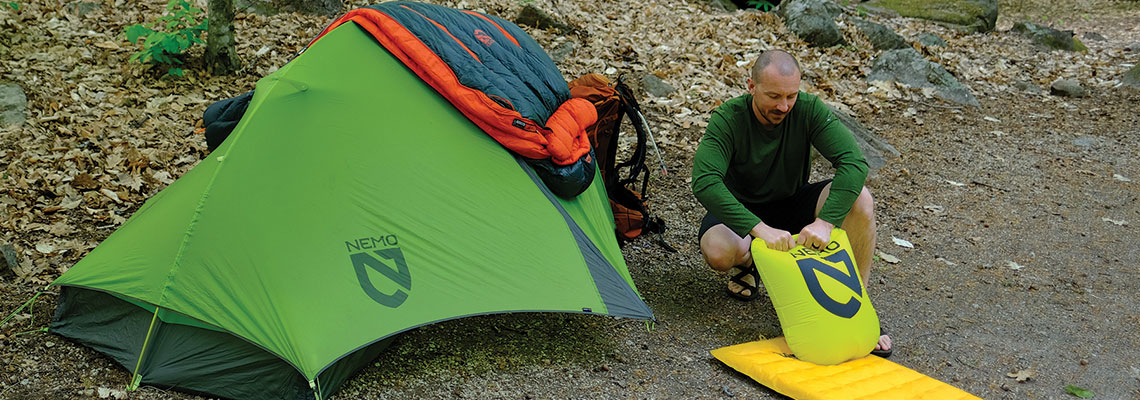How To Minimalise Condensation in a Tent

Falling asleep in a tent after a long day outside is soothing for many, but not so many when that drip starts happening inside your tent. Condensation - the culprit - can infiltrate even the most well-engineered shelter. When warm air comes into contact with a cold surface condensation can build up.
Like a glass of cold water on a warm summer's day, warm air moves towards the source of the cold. In the case of your tent, warm air from inside your tent will move to the rainfly as the air outside is cooler. This is why we will wake up to condensation after a temperature drop at night. Water may then saturate the tent fly or drip through a mesh window. If the inner makes contact with the condensation when you move in your sleeping bag you break that barrier and might wake up a little damp.
So, how do you prevent condensation? The answer lies in a few approaches:
- Pick a strategic place to pitch your tent (ie: under trees)
- Keep sources of moisture at a minimum inside your tent
- Ventilate as much as possible!
Strategic Pitching
Pitch on dry ground, preferably under trees. The air under trees tends to be warmer so your rainfly will be warmer, too. Being below the tree or foliage means there is likley to be more of a build up on the leaves and not on you.
Minimise the Moisture
Moisture in a tent can originate from:
- The existing moisture level in the air itself - the humidity
- Breathing in our Sleep - Don't worry you don't need to stop doing this one
- Damp or wet items that might be stored inside - your rain jacket if it was raining that day or damp socks
When you settle in for the evening, if weather permits, try to dry everything out as much as you can while you prepare dinner to relax for your evening. Put dry clean clothes on just as you go to bed, this is great for temperature control and hygiene, try not to sleep in anything damp or sweaty.
Ventilate
The air inside the tent is nearly always more humid than the air outside. You will need to replace the air inside your tent with the outside drier air and ventilating encourages that airflow with the drier outside air. Ventilation strategies include the following:
- Note the forecasted wind direction and pitch the tent so the door is facing into it.
- When pitching, peg the tent out so you can see good tension in the fly. This will maximize the airspace between it and the inner.
- Leave your tent pitched with rainfly doors open and rolled-up sections; only deploy them if rain starts to fall - you can keep the mesh closed to avoid bugs
- Open up vents and windows. It is best to open the vent that is opposing too to encourage airflow through the tent
It’s rare for your rainfly to be bone dry come morning but minimising moisture through these tips will give you a fighting chance to not be woken up by dripping.


































